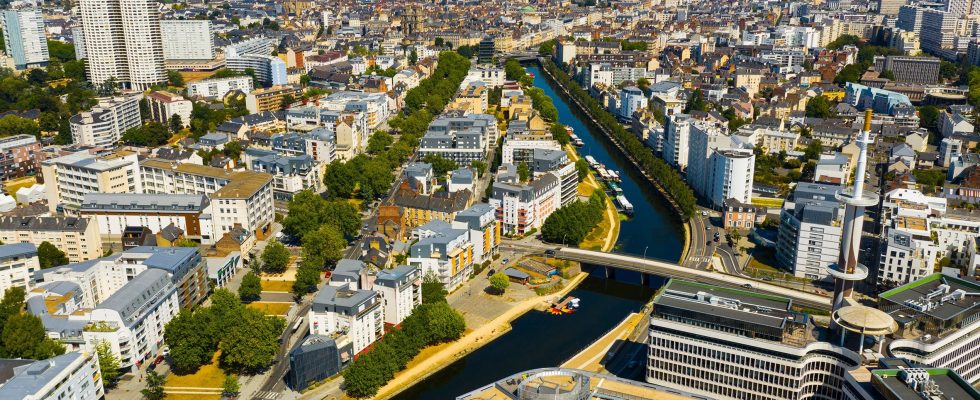Sobriety operation. Last December, Rennes renewed its plan to reduce Christmas lights, launched in 2022 in the midst of the energy crisis. Festivities delayed by a week, lights going out an hour earlier than before, reduction by a third in the scope of the celebrations… Enough to reinforce the status of a good student of the prefecture of Brittany in this area. According to a study by the young company UpEnergiebased on data published by the ORE agency (Energy Network Operators), Enedis and INSEE, it is one of the three cities of more than 100,000 inhabitants which consume the least electricity per inhabitant and per year, with Saint-Etienne and Mulhouse.
The reasons for this excellent result are multiple. First of all, the metropolis enjoys a temperate oceanic climate. It is neither too cold in winter nor too hot in summer, which limits the need for heating or air conditioning. But this natural advantage does not explain everything. The proof: neighboring localities perform less well in the ranking.
“In Brittany, the first item of energy consumption concerns residential and tertiary buildings (40%), ahead of transport (35%) and industry (14%)”, contextualizes Renaud Michel, coordinator of the energy transition pole within the regional directorate of the Environment and Energy Management Agency. energy (Ademe). However, Rennes’ buildings are much more recent than those of comparable cities. According to INSEE43.5% of main residences in the Ille-et-Vilaine prefecture were built after 1991, compared to 34.3% for Bordeaux33.4% for Nantes or 23.8% for Brest. Newer, therefore better insulated and less energy consuming. According to the Ministry of Ecological Transitionmore than half of the homes built after the 1990s have an energy performance diagnosis displaying at least the letter C. Conversely, the majority of thermal sieves correspond to homes built before the 1970s.
Real political activism
This observation is far from being anecdotal when we know that, according to an Ademe report published in 2019, heating is, by far, the leading item of electricity consumption (27.6%), ahead of heating appliances. cold (fridge, freezer) and washing (18.5%).
The other explanatory element relates to the vast district heating network of the Rennes metropolis, which today serves 110,000 users, with the ambition of reaching 135,000 by 2030. Powered mainly by renewable energies or recovery (wood and waste), it has a total of 83 kilometers of pipes. A figure expected to increase in the years to come. “We are planning nearly 150 million euros of investment to extend and interconnect our heating networks in the future,” assures Daniel Guillotin, municipal councilor (PS) of Rennes responsible for Energy, climate, sustainable building and biosourced materials.
So many initiatives which bear witness to real political activism, driven by the Territorial climate air energy plan adopted by the metropolis in 2019. The emphasis was particularly placed on the renovation and improvement of the energy performance of buildings. It also aims to reduce public lighting by 40% by 2030 by equipping it with more energy-efficient LED bulbs and switching it off in less densely populated areas. All savings are good to take!
